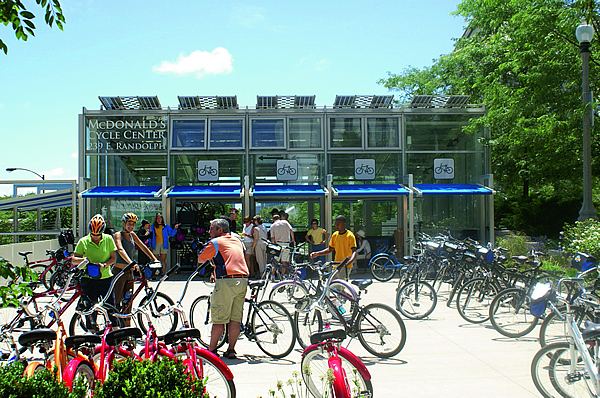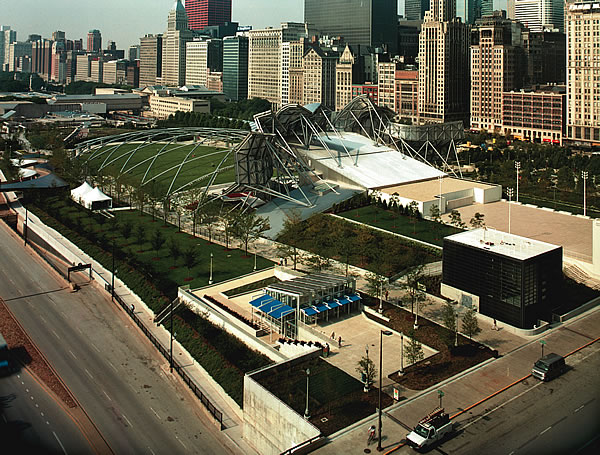CYCLINGMOBILITY
The McDonald’s Cycle Center is enabling increased cycling mobility for tourists, commuters, recreational riders and police cyclists alike . Sponsorship has given the facility a viable economic footing too.
By Ivy Gracie
To the uninitiated, Chicago seems like an unlikely place for cyclists, and with good reason. It’s big: with almost 3 million residents, it’s the third largest city in the United States. It’s intimidating: Chicago’s nearly 596 square kilometers of land area are latticed with congested streets and highways. And its weather is far from cyclist-friendly: the city’s bipolar climate fluctuates between teeth-chattering, snow-spattering winters and sweat-drizzling, sidewalk-sizzling summers. But even so, this metropolis reached a bicycle commuter mode share of 1.15% in 2009 – an increase of 129% since 2000. And in 2010 it was named the tenth most bike-friendly city the US-based Bicycling magazine.
Certainly, part of that can be attributed to the McDonald’s Cycle Center, the first bicycle parking station with amenities, not just in the city of Chicago or the state of Illinois, but in America’s “Midwest” – an eight-state area in the northern, central region of the country. Thanks to its innovative design and prime location in one of the most visible and visited destinations in the city, the McDonald’s Cycle Center, Millennium Park, has pushed city cycling to centre stage.
One might say it’s a family tradition to support bicycling in Chicago – that is, if the family is a local political dynasty named Daley. During Richard J. Daley’s tenure as mayor (1955 to 1976), he designated Chicago’s famous 18 mile (29km) trail along Lake Michigan as a bike path and created the city’s first on-street cycle routes and rush-hour bike lanes.
In 1991 his son, Richard M. Daley – still mayor of Chicago to this day – began an ambitious, long-term crusade to make the city more bicycle-friendly. Under the younger Daley’s watch, the city generated a network of 115 miles (185km) of on-street bike lanes and more than 125 miles (201km) of signed bike routes, and installed over 12,000 bike racks throughout Chicago. Additionally, the Chicago Transit Authority (CTA) fitted buses with bicycle racks, began allowing bicycles on trains, and added parking facilities at most transit stations. But despite the ongoing improvements, commuter feedback called for better-equipped bicycle stations where cyclists could park their bikes, shower, and dress for work.
…
 View full article (cyclingmobility.com): Creating Convenient Cycling in Chicago
View full article (cyclingmobility.com): Creating Convenient Cycling in Chicago
About cyclingmobility
www.cyclingmobility.com
“cyclingmobility is the international journal which will help readers understand the global picture of today’s trends and tomorrow’s innovation in cycling infrastructure and policies. Commentating on the present and helping to shape the future of our cities and their sustainable transport infrastructure, Cycling Mobility offers you the opportunity to influence the professionals shaping our world through an unparalleled communication channel.”
Tags: Chicago, Cycling, cyclingmobility, IL, Illinois, Ivy Gracie







 RSS Feed
RSS Feed